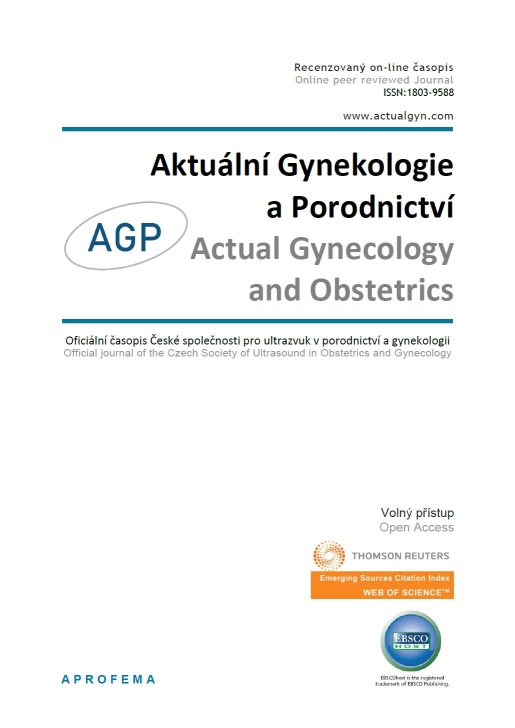











 Official publication of the Czech Society of Ultrasound in Obstetrics and Gynecology.
Official publication of the Czech Society of Ultrasound in Obstetrics and Gynecology.

Abstract from the Conference - Ultrasound and imaging in gynecology and obstetrics held in Olomouc, 17. - 19.9.2015
Placental mesenchymal dysplasia (PMD), also known as mesenchymal stem villous hyperplasia, was initially recognized by Moscoso et al. in 1991. It is a rare placental abnormality that is associated with a significantly increased risk of adverse perinatal outcome: fetal growth restriction, preterm birth, and intrauterine fetal death. It may also be associated with Beckwith-Wiedemann syndrome as well as other genetic syndromes. However, unlike partial molar gestation, it is not associated with triploidy. PMD has a definite female preponderance (approx. 4:1).
Clinically, PMD may be associated with an elevated maternal serum alpha fetoprotein and an elevated human chorionic gonadotropin. On ultrasound, the appearance of the placenta is very similar to that of an incomplete mole: placentomegaly and grapelike vesicles. However, the multiple anomalies that are generally seen in association with triploidy are absent. The microscopic appearance of the placenta includes aneurysmally dilated vessels on the fetal surface of the placenta and dilated stem villi containing clear gelatinous material in the subchorionic region. The main feature that distinguishes this entity histologically from a partial mole is the absence of trophoblastic proliferation.
Even though it is considered exceedingly rare, PMD cases are probably underreported due to the lack of familiarity with the condition by both the obstetrician and pathologist. According to one publication, when carefully searched for the incidence of PMD is 0.02%.
Moscoso G, Jauniaux E, Hustin J. Placental vascular anomaly with diffuse mesenchymal stem villous hyperplasia. A new clinico-pathological entity? Pathol Res Pract. 1991;187:324–328